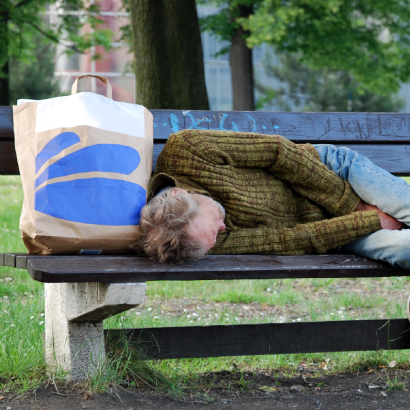
Park and recreation agencies offer a diverse set of facilities, activities, and programming that serves the varied needs and desires of their community. But, behind the scenes, park and recreation agencies across the country increasingly find themselves on the frontline of community outreach. For many communities, this includes agencies being a part of their cities’ response to the delicate circumstances of homelessness.
NRPA recently conducted a survey of urban park and recreation agency directors across the country on the topic of homelessness to gain an understanding of the views and actions of their departments and other local government agencies.The findings highlight that while park and recreation agencies are not the sole entity mitigating homelessness in the community, their resources — whether by design or circumstance — are relied on heavily to serve this population. It is disappointing that 36 percent of urban park and recreation directors say their agencies do not have a seat at the table at their cities’ homelessness strategies and initiatives.
Half of urban park and recreation directors report that their city has a coordinated strategy to mitigate homelessness that includes partnerships across city agencies and departments, nonprofits, faith-based organizations, community organizations and other outside nonprofit partners. Other cities are less organized with their strategies for helping the homeless. The leaders of homelessness initiatives are most likely to be nongovernmental nonprofits and faith-based organizations (45 percent), the local department of health and human services (46 percent), and/or, the police department (29 percent).
Whether or not they are at the table in their cities’ strategic planning on this issue, 54 percent of park and recreation agencies deliver services and provide programming geared toward the homeless population in their communities. Many of these services include the basic necessities of life while also providing a path for the individual to get on their own feet. These services include:
- Making restroom facilities and showers available
- Converting recreation centers into emergency shelter during periods of inclement weather (e.g., extreme temperatures, storms)
- Providing access to computers and telephones
- Offering drop-in social services
- Assisting in securing storage of personal effects
A quarter of urban park and recreation agencies also deliver specific programming targeted to their communities’ homeless population. These include
- Drop-in hours for city agencies and nonprofits.
- Education/Training
- Health and fitness programs
I encourage you to review the full survey report to see how your agency’s and city’s homelessness initiatives compare to those of other cities across the United States. Further, check out some of the presentations made at the Los Angeles NRPA Innovation Lab to get a better handle on the scope of homelessness. Finally, NRPA is developing a summary and mini-toolkit based on the conversations in Los Angeles that will contain examples of staff training, policy documents, and some case studies that could apply to your community. While park and recreation agencies will not solve the issue of homelessness in our cities by itself, we know they will be a part of the solution by being there for those in need.
Kevin Roth is NRPA’s Vice President of Research.

